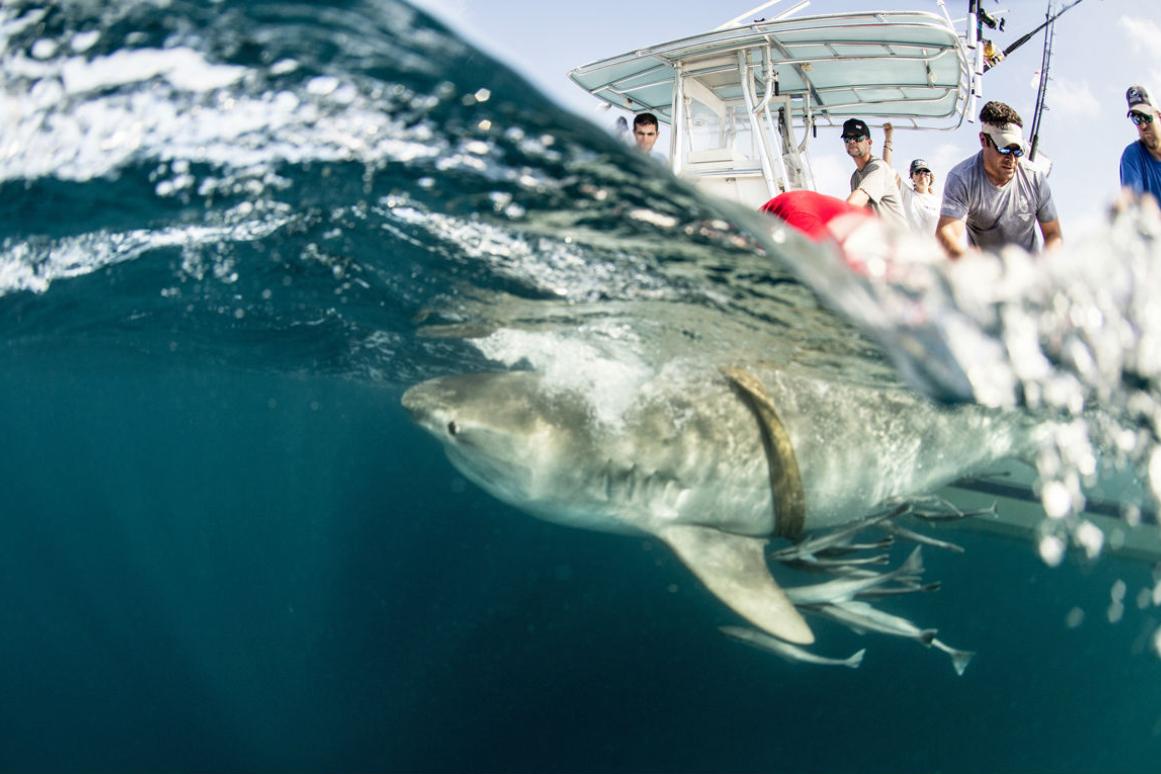Recreational Fishery Data Shows Changes in Coastal Sharks
CORPUS CHRISTI, Texas — Historic shark catch data from anglers fishing off the Padre Island National Seashore is uncovering new trends in south Texas coastal shark populations decades later, according to a study published by Center for Sportfish Science and Conservation (CSSC) researchers.
By studying historic catch data from the Corpus Christi Shark Association and comparing it to a modern shark catch database maintained at the Harte Research Institute (HRI) for Gulf of Mexico Studies at Texas A&M University-Corpus Christi, scientists found recorded catches of Bull Sharks in the area have declined by nearly a foot in length since the 1980s, and other species, like the Lemon Shark, are rarely being caught off Coastal Bend beaches. That data mirrors population and catch size declines found in the Gulf of Mexico and across the world as shark populations suffer the effects of commercial exploitation and illegal fishing.
“We’ve known for years that shark populations are very sensitive to overfishing. They mature slowly and don’t reproduce as often as other marine species,” said Dr. Matt Ajemian, a former HRI researcher and now Assistant Research Professor with Florida Atlantic University-Harbor Branch. “Decreases in these apex predators, especially the big ones, may have ecosystem level effects. By creating stronger relationships with these fishermen who are out in the field every day, we can work to document these changes.”
The paper, “Was Everything Bigger in Texas? Characterization and Trends of a Land-Based Shark Fishery,” was published by Ajemian and HRI graduate Philip Jose.
Most of the current data on shark populations originates from fishery surveys that can be expensive and cumbersome to produce and are conducted offshore. Using data directly from fishermen can provide a useful historical baseline to study and compare trends in large species over time because anglers are generally competing for the largest fish, Ajemian said. They’re also fishing from locations that scientists aren’t commonly sampling, including beachfronts and shallow coastal waters that could be important migratory pathways.
In this case, researchers took shark catch data collected by the Corpus Christi Shark Association from 1973-84 and compared it to data from the Sportfish Center's shark tagging database collected over the last decade. That data straddled a period of very high commercial exploitation of sharks, and gave researchers a chance to look at the changes that resulted from it: Declines in size and catch of certain shark species.
Working with fishermen, the CSSC has tagged and released over 3,800 sharks mainly off the Texas coast, said Kesley Gibson, an HRI doctoral student who has been leading the Sportfish Center’s outreach and satellite shark tracking efforts. Each tag has a unique ID number, and participating fishermen can be notified where and when their sharks are recaptured and reported and help provide scientists with important data about shark habitat use and migration. Experienced fishermen have even helped the CSSC to outfit sharks with state of the art satellite tags that provide real-time data about their movements in the Gulf of Mexico, tracking some sharks on journeys that span months and hundreds of miles of ocean.
Shark populations have been on the decline globally since the 1960s. In the North Atlantic alone, shark populations have reportedly declined by more than 50 percent between 1986 and 2003, with Tiger Sharks and hammerheads being among the most affected. By actively involving fishermen in their efforts to study shark populations, scientists are getting access to a conservation-minded army of volunteers who are out on the beaches and in coastal waters every day interacting with the environment.
“These are the people who are out there paying attention and they can see these sharks in decline, it’s not just a fisherman’s tale,” Gibson said. “By creating stronger relationships we can better understand what’s happening to these populations together.”
Additional coauthors on the paper include John Froeschke of the Gulf of Mexico Fishery Management Council, Mark L. Wildhaber of the U.S. Geological Survey Environmental Research Center and HRI Endowed Chair for Fisheries and Ocean Health and Director of the Center for Sportfish Science and Conservation Dr. Greg Stunz.

